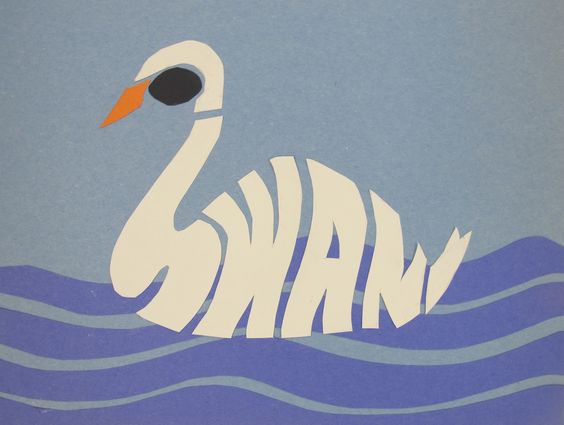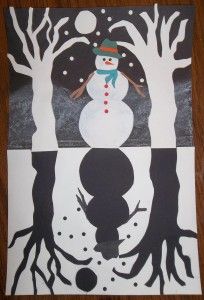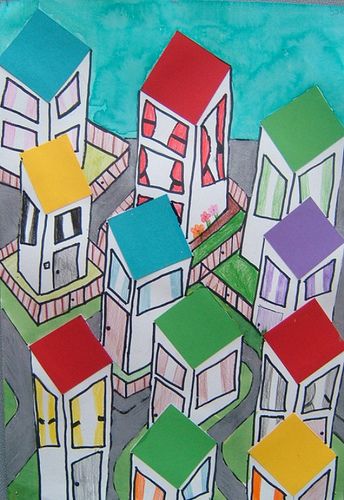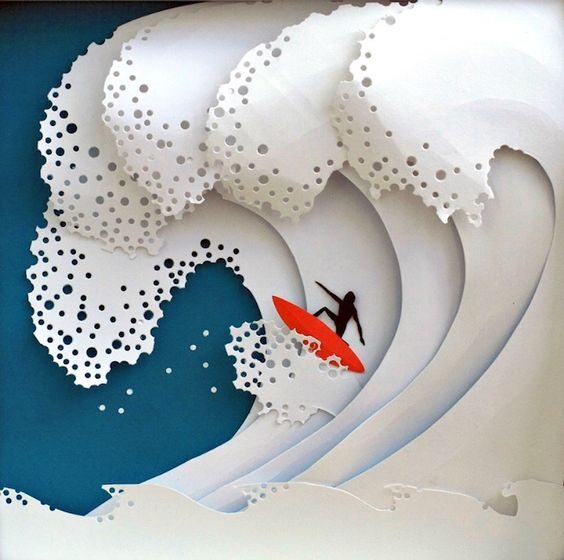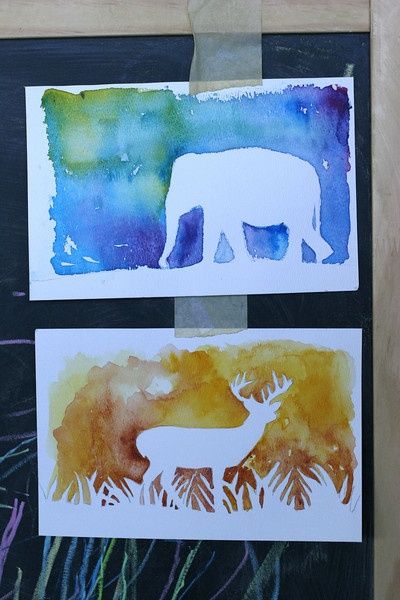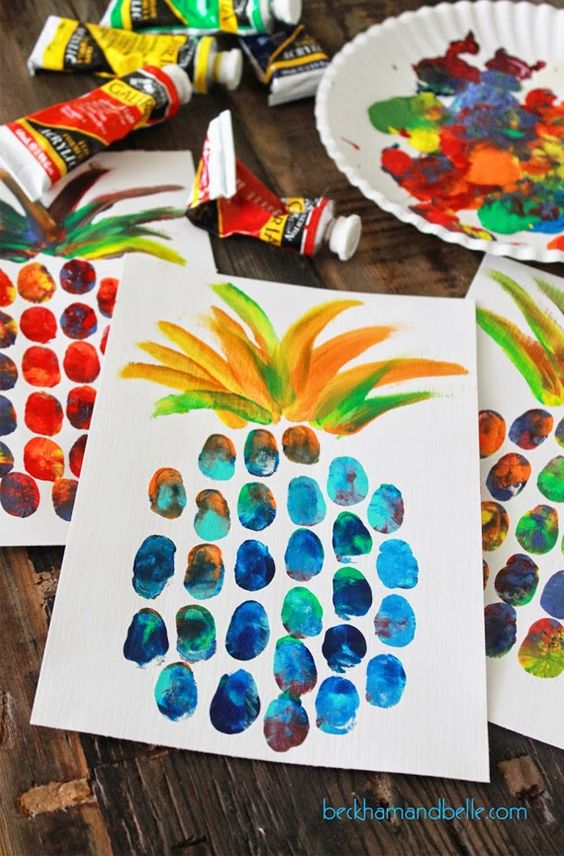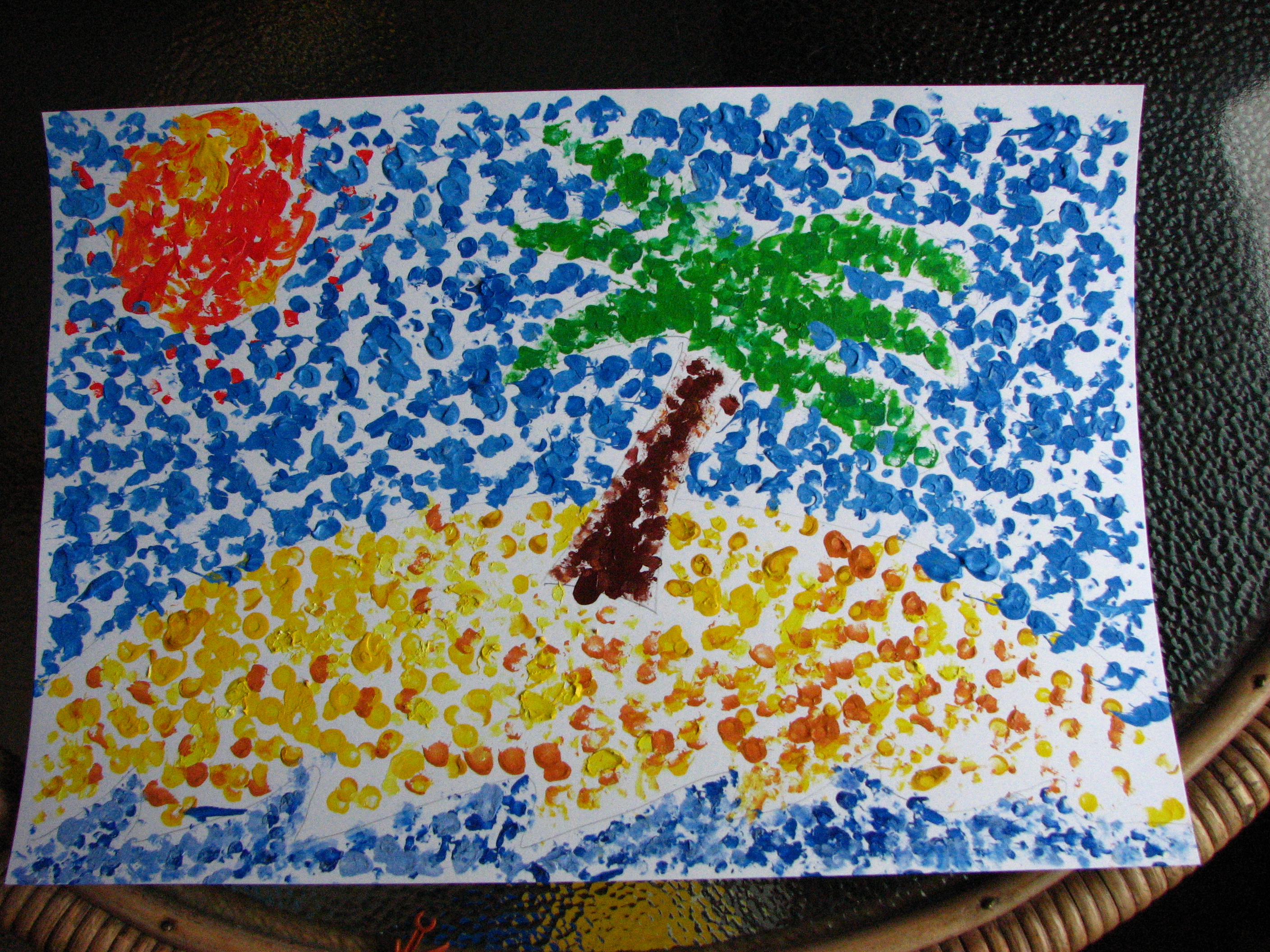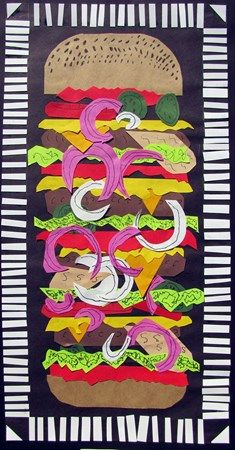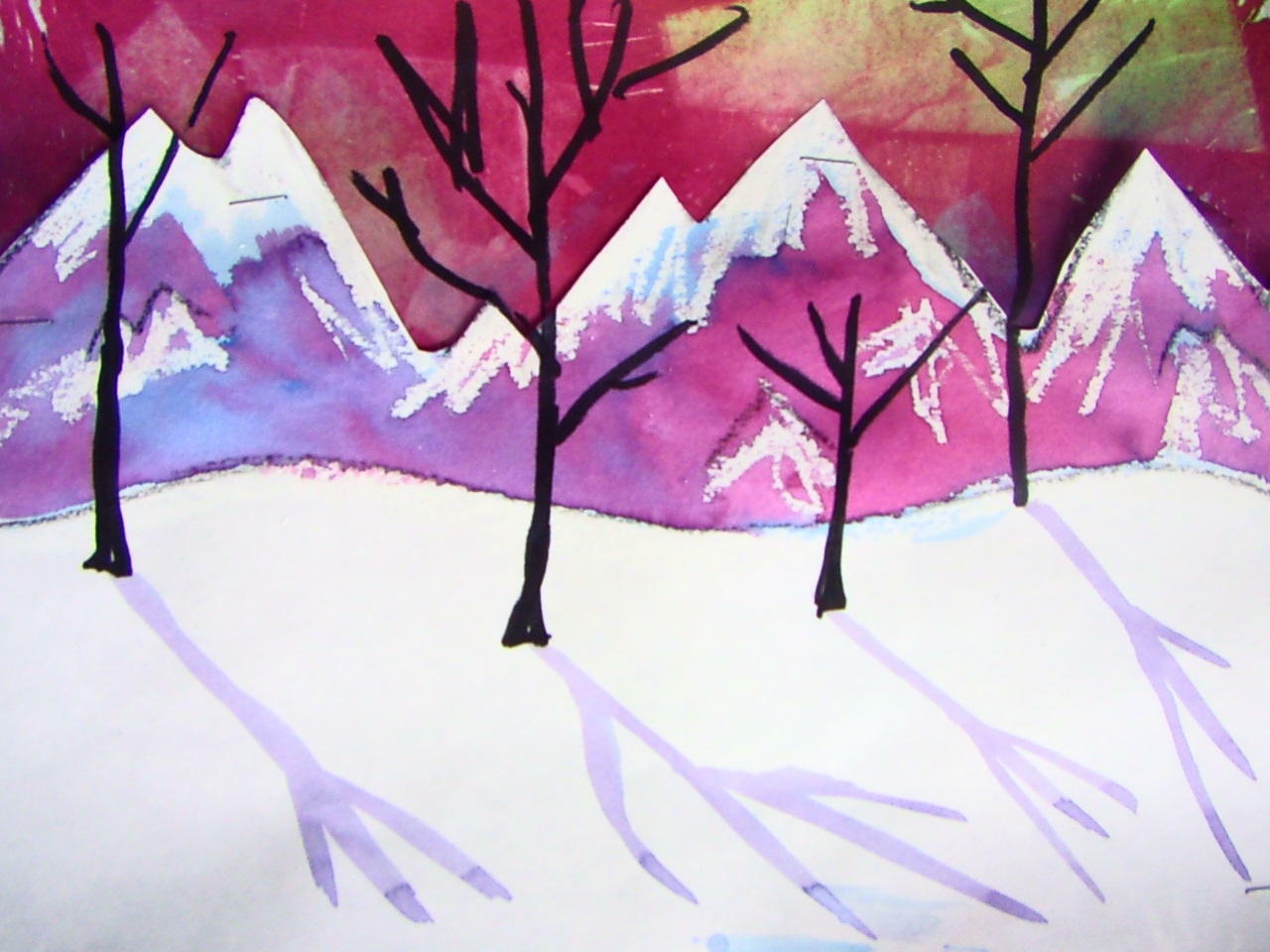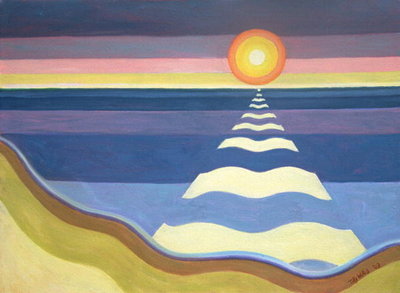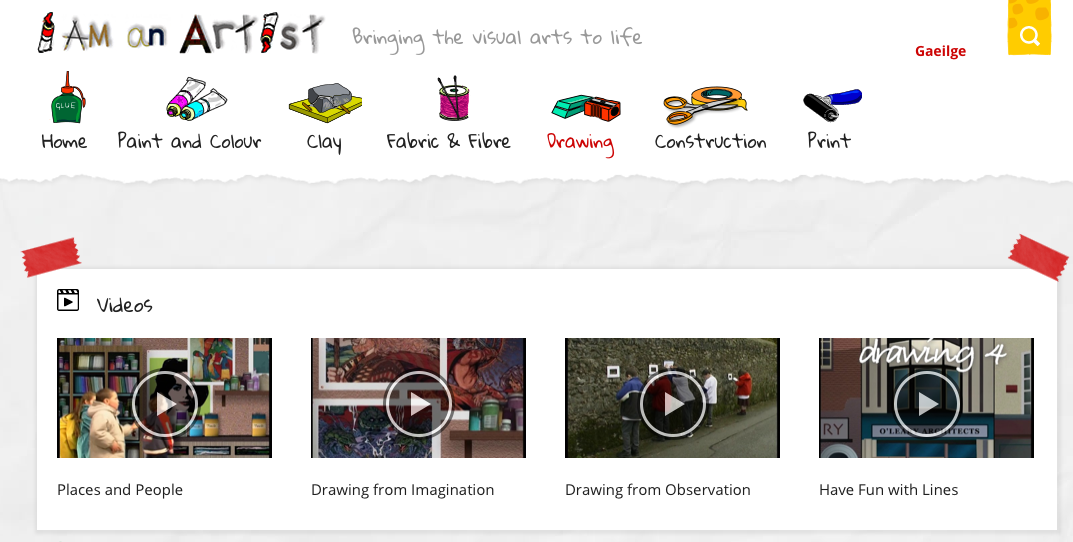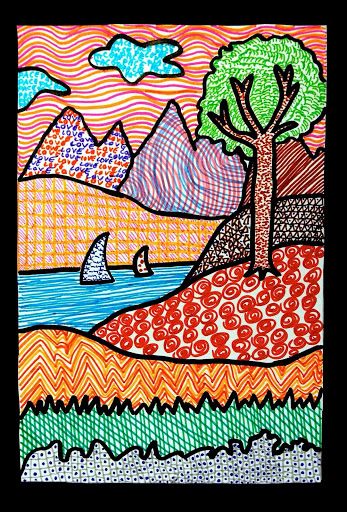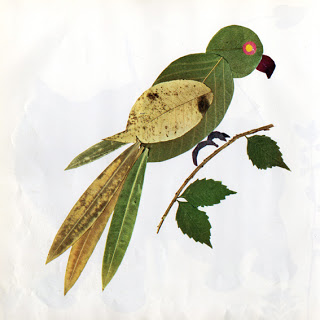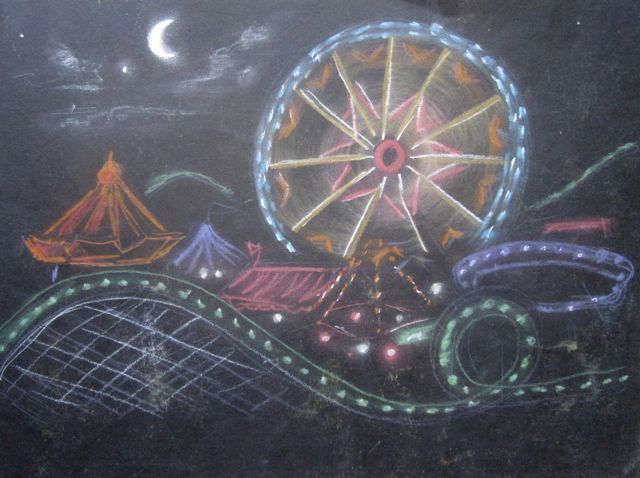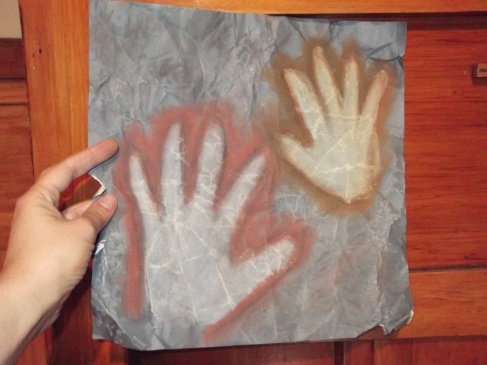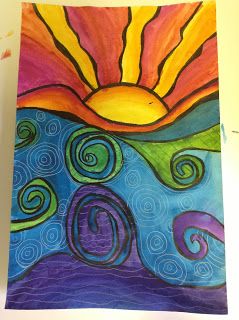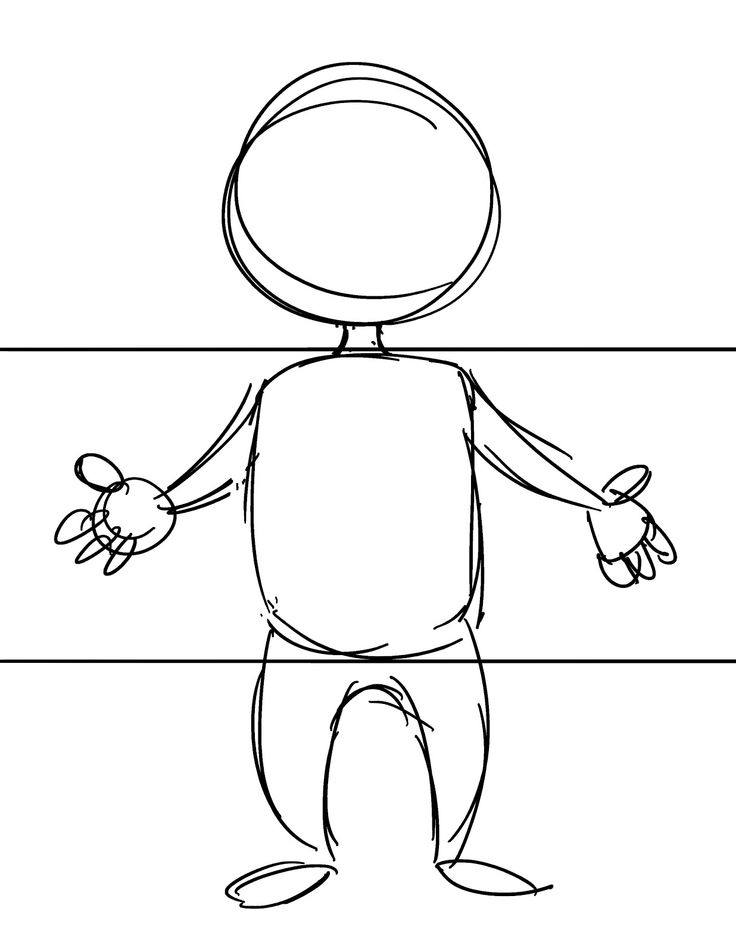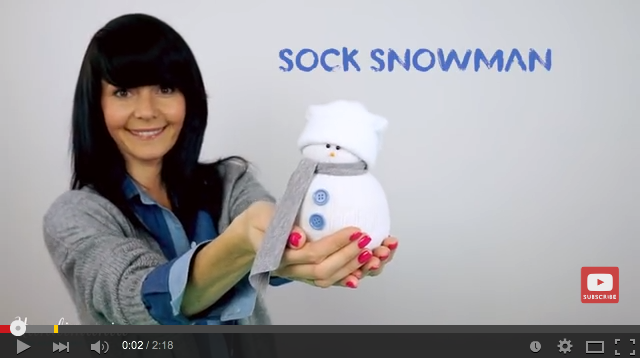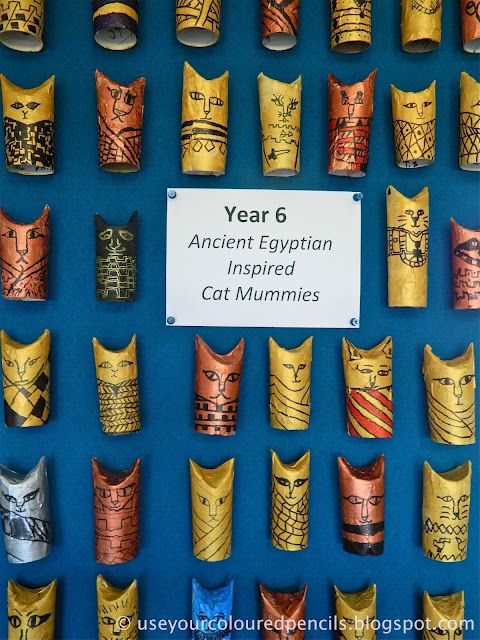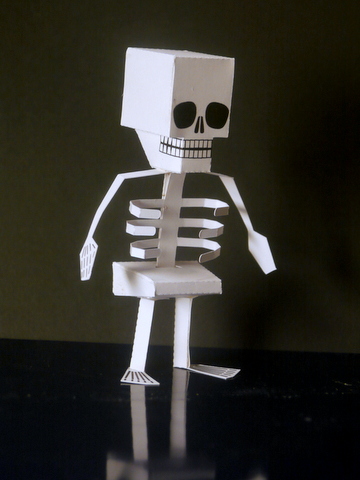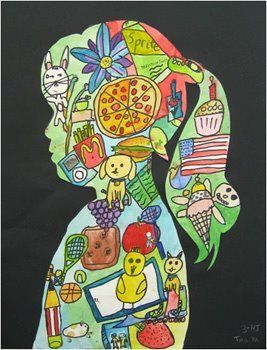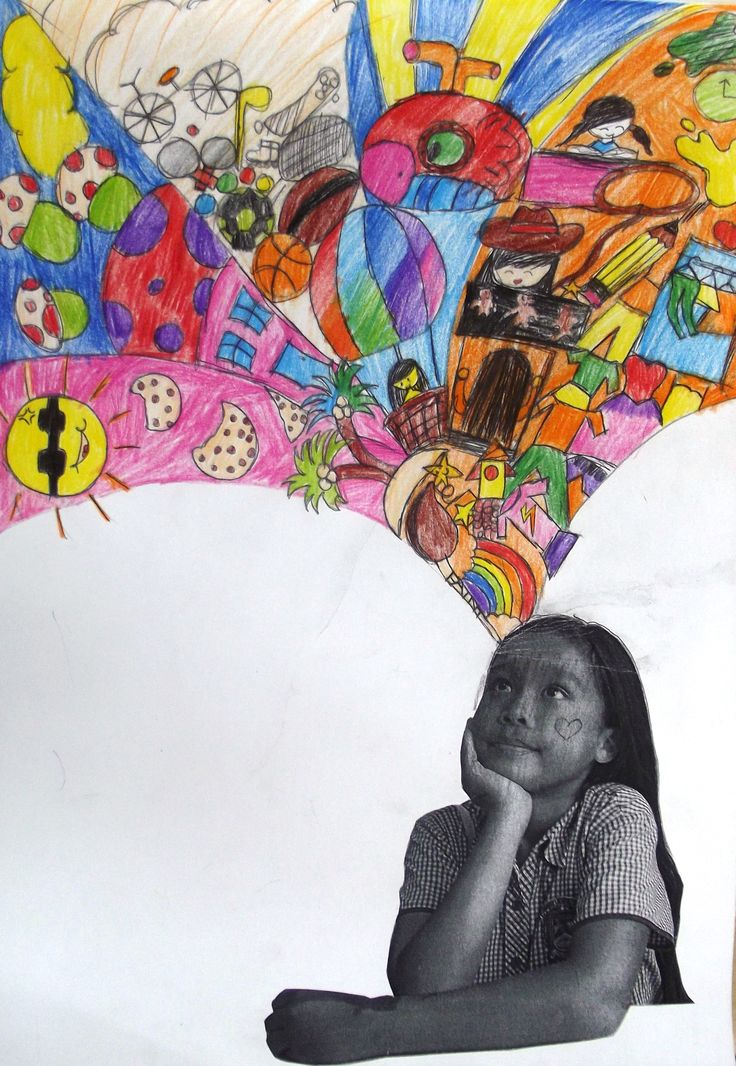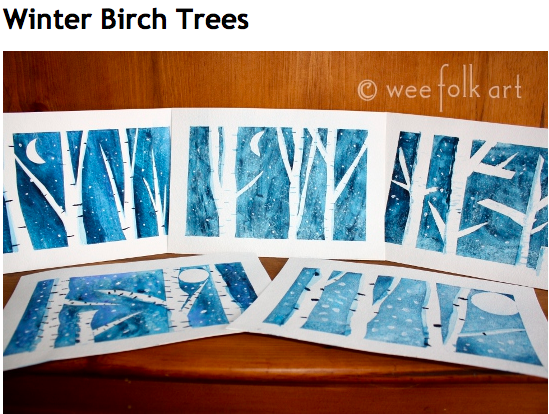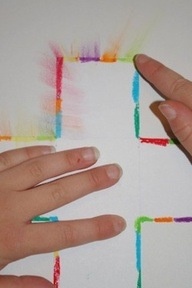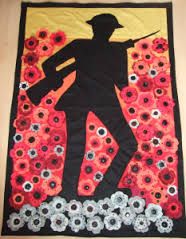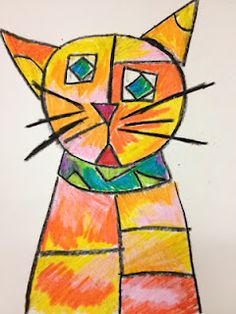Art
The Swan
This is a beautiful piece of artwork created using paper and paints.
The background is easy to replicate but the swan takes a little bit more time.
Instruct your children to write the word ‘Swan’ in bubble writing in a similar way to the picture shown (wavy). Ensure the S is tall and resembles a neck. The letters W and A must be taller than the N. You can also make the N part of the tail by making it longer.
Once they have completed that, they must then create the curved head.
Negative Symmetry Art
This style of artwork is diverse and can be linked to a topic of your choice.
The children will need a black piece of card and a white piece of card to start. Stick both pieces together landscape as shown in the picture.
To create the shapes perfectly, the children will need a sheet of black paper, a sheet of white paper and a page of card to use to create the templates.
They will then draw the outlines of their chosen image on the page of card to create a template and cut it out.
They will then trace around the template of both pieces of black and white paper (not card). Once they have done that, they can stick the paper outlines on to the pieces of card. The white paper will go on the black card and the black paper will go on the white card. Children must ensure the bottom of each item is touching where the black card meets the white card as shown in the image.
Perspective Art
This is a challenging piece of artwork but the best always are.
As the image is quite complex, perhaps just draw one house with your class initially and see how it goes.
Inform the children that they are going to start with the house with the yellow roof (top left). Start by drawing the grass square. Make sure the square is rotated as shown in the image and the children are drawing light lines as they will need to be rubbed out.
Once the outline of the grass has been drawn, you can now draw the house. Draw a tall cuboid – The children may need plenty of practice doing this so take a scrap piece of paper. Rub out the grass lines that would be behind the house.
Once the children have drawn this, they must take a piece of squared paper (smaller than the grass area) and place it on top of the cuboid to create a roof. Ensure the corners are in line with the edge of the house and the grass corner.
Finally draw on the windows and door.
Wave Art
This piece of artwork has been created using sheets of paper. The children will create waves like those shown in the picture. The holes can be created afterwards using a hole puncher.
Once the waves have been cut out, punched with holes on the ends and stuck down onto a blue background page.
They will then create the surfer and board using card and stick it on the waves. To create the water droplet effect, cut paper into very small pieces, glue them and then sprinkle onto the background.
Animal Silhouettes
These are beautiful silhouettes of animals that can be created by tracing round an animal of choice, cutting it out to make a template.
Once the template has been created, the children can add colours to a palette to create a background. Ensure the children don’t mix the colours thoroughly, as you want the colours to be definite in parts.
Once the colours have been mixed, placed the template on a white piece of card and then paint using a sponge. Remove the template and you have the image shown.
Note: To create grass, trees etc. you must create a new template.
Pineapple Art
This is a very simple, yet effective piece of artwork. The children will get pretty messy, but it’s worth it!
Add colours to a palette but don’t mix them thoroughly as you want the definite colours to be shown.
Pointillism
Click the image to get a closer look at this pointillist artwork created using cotton buds. You can also create pointillist artwork linked to your class topic.
Matisse Inspired Art
You children can create this Matisse inspired artwork by cutting paper to create different textures.
Create a mind map of the various burger toppings and discuss ways to create those textures by using paper only.
Snowy Mountains
A fantastic piece of artwork. This artwork makes good use of colours, lines and also introduces the concept of shadows.
Tilly Willis
This is a very simple, yet very effective piece of artwork by Tilly Willis. Using a variety of colours and straight lines, your children will be challenged to create the depth of the image. I would recommend leaving space for the sun and the reflections whilst painting, or creating their effects using glitter.
Silhouette Artwork
Although this artwork is inspired by stonehenge, your children could choose any landmark they liked.
Art Tutorials
This link takes you to an artistic website. The aim of the site is to develop the skills of young artists by providing them with video tutorials. The site is broken down into categories to focus of different aspects of art. A great resource for teachers to help develop the artistic skills of your children.
Patterns Landscape
Encourage your children to focus on patterns with this lovely landscape.
Each pattern represents the terrain it covers. If you begin with the definite black lines from the bottom and work your way up, you will find this a relatively straight forward piece of artwork.
First use pencil to create the black lines. Then create the patterns. Finally go over the pencil lines with thin black pen.
Click the image to get a closer look at the patterns.
Animal Patterns
This is a very effective piece of artwork when looking at the different patterns of animals.
The children will research different animal patterns, select the colours and shades they need and paint a background pattern.
They can then use tracing paper to draw their chosen animal and stick it over the patterned background.
Leaf Animals
This is such a beautiful concept… bringing animals to life using nature.
The children will gather a range of leaves to create a piece of artwork. Ensure the leaves are different types, shapes, colours and sizes to get the most out of this activity. Autumn is always a great season to complete this activity.
Click the image to see more examples…
Paul Klee Artwork
Born – December 18, 1879
Paul Klee, a Swiss-born painter who greatly admired the art of children, who seemed to create free of models of artwork.
In his own work he often strove to achieve a simplistic piece of work, often by using intense colours, line drawing and using shapes.
To find out more about Paul Klee and to access a range of artwork examples to complete with your children, click the image.
Andy Warhol Artwork
Born: August 6, 1928
Andy Warhol’s works explore the relationship between artistic expression, celebrity culture, and advertisement that flourished by the 1960s.
To see a range of art examples that you can complete with your class, and instructions on how to create the artwork, click the image.
Cave Finger Painting
Create cave finger handprints using chalks and the smudging technique. Click the image to learn more.
Sunrise
This a very effective piece of artwork. Teach your children about different lines and colours and lines to create depth.
Character Swap
Create a range of characters by cutting card into three pieces and sliding them across.
Characters
This tutorial shows you how to create a snowman, but you could create a character to fit in with your topic or use it when writing stories.
This could also be part of an ICT project.
Click to learn how…
Cat Mummies
A fantastic and effective piece of artwork using kitchen rolls cut in half. Great when looking at Ancient Egypt.
3D Artwork
A fantastic, yet simplistic technique of creating 3D artwork with your children. Click on the image to watch the full tutorial.
Getting to know me
A great idea for a lesson linked to ‘Ourselves’ or ‘Getting to know me’. The children have the freedom to draw whatever they feel is important to them in their silhouette. This is also a good way for the children to get to know each other – likes, hobbies and other details. Place all the artwork on display and let the children learn about each other like they were walking around a gallery.
Thinking Art
A variation to the above image and another great idea for a lesson linked to ‘Ourselves’, ‘Getting to know me’ and ‘Feelings’. The children have the freedom to draw whatever they feel is important to them in their silhouette. The children could also draw different thing that makes them happy, sad etc. linked to ‘Feelings’ in PDMU.
Winter Trees
This artwork is created by using masking tape and paint. First you mask a border around the card. Next your create the trees in any shape. Then you paint over the entire page. Finally you peel off the masking tape. Tip: Use shiny card as normal card tends to rip.
Colourful
Inform the children that they are going to draw the outline of any object they wish. Encourage the children not to draw to small or too complex. Using a variety of colours, the children will colour the online then smudge outwards.
WW1 Art
World War 1 art idea. There are many ways to complete this artwork. Encourage your children to start with the background and then allow then to create their silhouette of the soldier.
Paul Klee
A great piece of artwork for your children to experiment with using shapes to create artwork. This artwork will also encourage them to find shapes in the world around them and decide which shapes best represent features. Your children could choose any animal.

